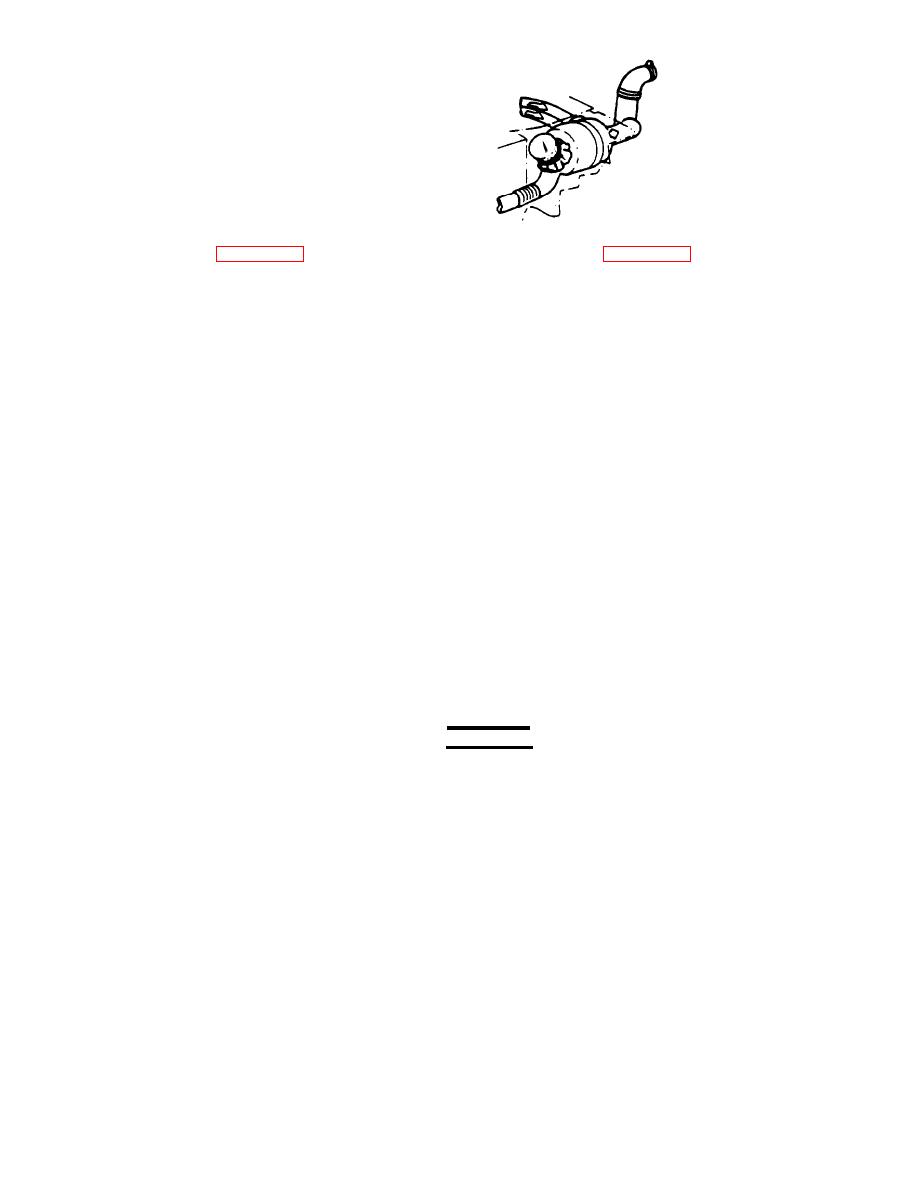 |
|||
|
|
|||
|
Page Title:
Section IV. ENGINE EXHAUST SYSTEMS |
|
||
| ||||||||||
|
|
 TM 5-3835-222-BD
Personnel/Time
Required:
1 soldier - 30 minutes
l
Materials/Tools:
Blanket or Shirt
l
l
Procedural Steps:
a. Disconnect the air hose at the attachment to the engine.
b. Cover the air inlet with a clean cloth (such as a shirt or blanket). Clean the cloth whenever
It gets dirty.
c. Anchor the cloth tightly to the air intake with a hose clamp or wire, otherwise the strong vacuum
will suck the cloth into the engine.
Other Options:
Bypass or eliminate air cleaner.
l
Record the BDAR action taken. When the mission is completed, as soon as practicable, repair the
equipment using standard maintenance procedures.
to repair. Autobody fillers, epoxies or gasket sealers can seal cracks. Holes will require welding
because of irregular surfaces. Tape will provide a temporary seal on unpressurized air intake portions
but has minimal value for pressurized systems without metal or wire reinforcement. Epoxy kits
will make an almost permanent repair, if time is available for curing. Follow the individual kit directions.
Section IV. ENGINE EXHAUST SYSTEMS
WARNING
This can cause personal injury or possibly even death. Care must be
taken, to keep carbon monoxide away from the operator.
4-13. The engine exhaust system consists of the exhaust manifold, muffler and pipes to
routed through the turbocharger to drive the vanes. Damage to the muffler or pipes, not including
the ducting for the turbocharger drive circuit, are inconvenient, but the equipment can still be
operated. Turbocharger drive circuits must be repaired or engine performance will be degraded.
CAUTION
Continued engine operation with damaged exhaust manifolds may set
the fuel lines on fire.
to the exhaust manifolds upstream of the turbocharger will degrade engine operation.
Personnel/Time Required:
1 soldier - 15 - 30 minutes
l
4-5
|
|
Privacy Statement - Press Release - Copyright Information. - Contact Us |